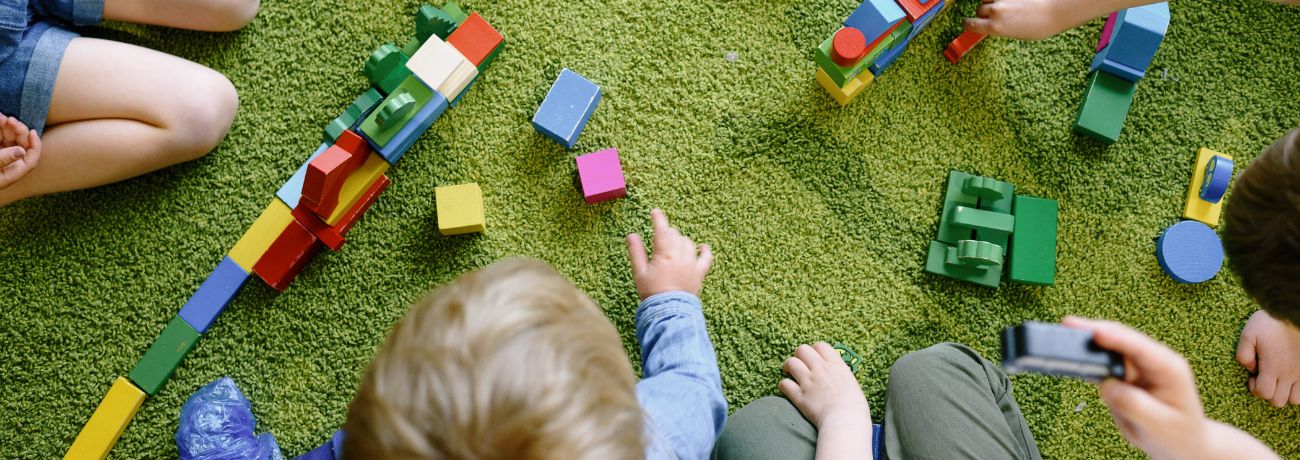Focused vs. Comprehensive ABA Treatment
When caregivers are determining the intensity or number of hours of Applied Behavior Analysis (ABA) for their child per week, it can be challenging for families to understand why a specific number of hours is recommended or to find the time and justify the amount that their Board Certified Behavior Analyst (BCBA) suggests.
By understanding the underlying causes of behavior, an ABA therapist can tailor therapy interventions to meet the specific needs of children. This collaboration between the therapist, families, and the child’s environment is crucial for creating individualized treatment plans and facilitating meaningful behavioral changes.
To address these questions, the following provides insight into the rationale and research behind BCBA recommendations for each client. Let’s dive into our blog, Focused vs. Comprehensive ABA Treatment.
Understanding ABA Therapy for Autism Spectrum Disorder
Applied Behavior Analysis (ABA) therapy is a scientifically-validated approach to understanding and changing behavior, particularly for individuals with Autism Spectrum Disorder (ASD). ABA therapy focuses on breaking down complex behaviors into smaller, manageable parts, and using positive reinforcement techniques to encourage desired behaviors.
By understanding the underlying causes of behavior, ABA therapists can develop personalized strategies to improve communication skills, reduce problem behaviors, and enhance overall quality of life. ABA therapy is highly individualized, with ABA therapists working closely with each client to tailor interventions that meet their unique needs and goals.
Key Features of ABA Services
According to the BACB in the second edition of Applied Behavior Analysis Treatment of Autism Spectrum Disorder: Practice Guidelines for Healthcare Funders and Managers (Behavior Analyst Certification Board, 2019), developing, supporting, or restoring functioning for those with Autism Spectrum Disorder (ASD) requires assessing the strengths, needs, preferences, and environmental circumstances of both the client and their caregivers.
These factors help determine whether a focused or comprehensive treatment plan is most suitable. Additionally, treatment plans must remain flexible to adapt to changes in these considerations over time.
When choosing between a focused or comprehensive treatment approach, the following considerations are assessed during the intake process and throughout treatment (BACB, 2019):
- The client’s interaction with their environment: Evaluating the context and value to the client, their family, and the broader community.
- Provider- or client-directed treatment plans: Assessing the involvement level of peers or caregivers in achieving goals.
- The number of recommended goals: Based on the client’s individual needs and their caregivers’ response to treatment.
- Exclusions in determining treatment intensity: Client age, diagnosis, or previous ABA services’ duration or nature are NOT considered when assessing current treatment needs
Intensity of Treatment
The intensity of treatment refers to the dosage of ABA recommended and is categorized into focused or comprehensive treatment. Intensive behavioral intervention often leads to quicker and more noticeable improvements compared to less intensive programs.
Focused ABA Treatment
Focused ABA targets a limited number of skill areas tailored to the client’s specific goals. The intensity of services ranges from 10 to 25 hours per week.
This type of treatment is ideal for individuals who need targeted interventions for specific behavioral challenges, including behavior reduction and skill development. For instance, a 10-year-old who struggles with making friends and regulating emotions might receive 10 hours of ABA weekly. Treatment goals would focus on improving social skills and emotional regulation.
Benefits and Effectiveness of Focused ABA Treatment
Focused ABA treatment is a targeted approach that addresses specific behavioral challenges or skill deficits. This type of treatment is ideal for individuals who require support in particular areas, such as reducing self-injurious behaviors, improving social interactions, or developing specific skills.
Focused ABA treatment has been shown to be effective in producing significant improvements in behavior and skill development, particularly when combined with parent training and natural environment training. By concentrating on a limited number of goals, focused ABA allows for intensive intervention in areas that are most impactful for the individual’s daily life and overall well-being.
Comprehensive ABA Treatment
Comprehensive ABA treatment addresses multiple areas of functioning, including cognitive, communicative, social, emotional, adaptive, and maladaptive behaviors. Weekly services typically require 30 to 40 hours per week to achieve significant positive outcomes in targeted skill areas.
For example, a 2-year-old experiencing delays in requesting, sharing with peers, tolerating non-preferred activities, eating, and following directions might receive 40 hours of ABA per week. Goals would target communication, social skills, behavioral support, listener-receptive skills, and Activities of Daily Living (ADLs). Early intensive behavioral intervention (EIBI) is one of the various ABA therapy models available, tailored for younger children to address their unique challenges and strengths.
The Research Behind ABA Intensity
Research has consistently demonstrated that utilizing a comprehensive ABA treatment model for children with ASD is the most effective method to develop, support, or restore functioning:
- Comprehensive ABA In addition to the immediate observed reduction in challenging behavior, comprehensive ABA results in the greatest positive gains in functioning for individuals diagnosed with ASD.
- Receiving at least 36 hours of direct ABA therapy weekly for a minimum of two years is associated with clinically meaningful improvements in cognitive and adaptive skills.
- Smaller improvements occur under low intensity ABA treatment compared to high intensity treatment.
- Eclectic treatment, which combines some ABA methods with other therapies or approaches, is often ineffective—even when individualized and intensive.
Discrete trial training (DTT) is a fundamental technique within ABA therapy, emphasizing its structured approach to breaking down skills into manageable steps. It is recommended to use DTT in everyday activities, such as mealtimes, to teach practical skills, while also creating a supportive learning environment through positive reinforcement and parental involvement.
Eclectic treatment is defined as a combination of TEACCH, sensory integration therapy, and some applied behavior analysis methods.
Choosing the Right Approach for Your Child
Deciding between comprehensive and focused ABA therapy for a child with ASD depends on several factors, including the child’s developmental needs, age, and family goals. Comprehensive ABA therapy is typically recommended for young children who require broad developmental improvements, while focused ABA therapy is more suitable for individuals who need support in specific areas.
It is essential to consult with a Board Certified Behavior Analyst (BCBA) to determine the most appropriate approach for your child. A BCBA will conduct a thorough assessment to understand the child’s strengths, needs, and the family’s priorities, ensuring that the chosen treatment plan is tailored to promote the best possible outcomes.
Implementing ABA Therapy at Home
Implementing ABA therapy principles at home can significantly enhance the effectiveness of treatment and foster consistency in the child’s learning. By extending therapeutic practices beyond the clinical setting, parents and caregivers can assume an active role in supporting the child’s progress.
This seamless integration of ABA therapy at home not only strengthens the child’s skill development but also fosters a nurturing and supportive ecosystem. Parents can work with ABA therapists to learn strategies and techniques that can be applied in everyday situations, creating a cohesive and continuous learning environment for the child.
Integration with Other Therapies
Comprehensive and focused ABA therapy can be integrated with other therapeutic approaches to provide a more holistic treatment for children with ASD. For instance, speech and language therapy complements ABA by targeting specific communication skills. Occupational therapy (OT) helps with motor skills and sensory integration, and physical therapy (PT) can address gross motor delays.
By combining ABA therapy with other therapies, families can create a comprehensive treatment plan that addresses their child’s unique needs. This multidisciplinary approach ensures that all aspects of the child’s development are supported, leading to more robust and well-rounded progress.
Why So Much ABA?: Focused vs. Comprehensive ABA
Why is such a high number of ABA hours necessary to achieve meaningful behavioral changes and skill acquisition for clients? Behavioral intervention has become the most widely recognized and empirically supported treatment for individuals diagnosed with ASD. Research shows that children with ASD who receive comprehensive ABA treatment are more likely to develop or restore critical functional skills, including communication, daily living tasks, and social interactions.
By partnering with Champions ABA, families gain access to evidence-based, individualized care designed to promote lasting success in their children’s lives. We offer premium home based ABA services in Connecticut, Colorado and Massachusetts.



